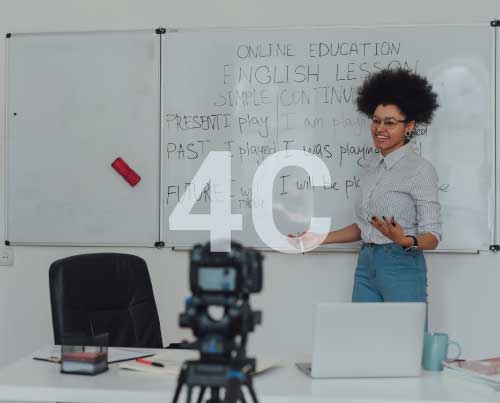Blog Post Heading
Blog Post Content
By Joe Peters
Editor, MindEdge Learning
A recent Gallup poll of students in Massachusetts affirmed the plethora of anecdotal evidence familiar to parents around the country: for K-through-12 students, remote learning during this pandemic isn’t living up to its in-person counterpart.
However, let’s not throw the pedagogy of online learning out just yet.
As I suspect is the case with many people my age (though few of us will acknowledge it), my introduction to remote learning was watching the 1976 made-for-TV drama, The Boy in the Plastic Bubble. The movie’s title character, played by a young John Travolta, is born with an undeveloped immune system, forcing him to live, as you can surmise, in a bubble. Eventually, he manages to attend high school via two-way video that made remote learning seem both fascinating and easy.
Two decades later, I was working at a public university and discovered that Hollywood had glossed over many aspects of distance learning. Mimicking the classroom experience takes a lot of work. While the professor may have been the star of the show, behind the scenes there were two to three other professionals supporting the operation. And of course, all that was in addition to having a classroom outfitted with the necessary audio, video, and networking equipment.
Eventually, a new suite of web-based tools shifted the paradigm. Classroom discussions were replaced by online chats. Overhead projectors gave way to shared screens, and, as has become evident as of late, all this instruction could be reduced to a footprint no larger than a phone.
While our tools have improved over the years, we continue to encounter blunders in trying to teach with technology. Probably the biggest mistake we make—one that I witness constantly as a technology professional and also as the parent of a high-schooler—is redundancy: if one tool is not working as we’d like, we just buy another one. As result, my son’s school has three overlapping services, forcing him to look in three places for assignments, updates, and the like. On top of that, each teacher seems to have their own preference for how they communicate (email, texting, online messaging, etc.).
The other error, which I saw first-hand in my higher-education days, is the belief that a tool that worked for one individual or in one situation will work for all. I remember working with a long-tenured English professor. As an in-person instructor, she had a great command of the classroom. She had a dry sense of humor that engaged her students and could shift nimbly depending on a student’s query. However, digitizing these attributes proved difficult. Even in today’s environs, the many subtleties that allow a great instructor to read and respond to a class are difficult to replicate online.
Many may be able to quote or paraphrase Gordon Moore’s famous postulation about the doubling of computing capability every two years. However, most overlook the second half of “Moore’s Law,” which states that accomplishing that growth requires an exponential increase in resources. While it is a bit of a simplification, it turns out that semiconductors and human beings have a lot in common.
Whether we are talking software or smartphones, the technology is just a vehicle. It’s what goes inside that vehicle that is important. And that’s where the exponential increase in resources should lie.
The other miscalculation that educators may be making is the belief that remote learning is just some temporary disruption. As was evident in the 1970s and should be obvious today, expanding the way we teach in turn expands the reach of education.
Simply sticking a camera and microphone in front of a teacher—making her just another talking head in Zoom window—fails to make the most of either the technology or the educator. As our sense of normal continues to evolve, and we see hints of better days ahead, we should guard against bursting the bubble of remote learning for younger students. The point is not that this is an inherently poor substitute for in-person education. The true lesson it has taught us is just how important the person in education really is.
For a complete listing of MindEdge’s courses about online learning, click here.
Copyright © 2021 MindEdge, Inc.
